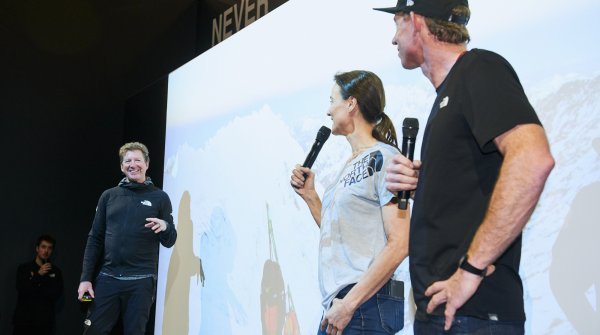
In the UK population of 44 million people, 20 percent are currently active in the outdoors – but only 6 percent do that on an at least weekly basis. Sarah Grant, Research Manager at Insites Consulting, asks at ISPO Munich 2018: “Why aren’t they getting outdoors more regularly?
Grant and her company set up online community, invited 100 people from UK, France, Germany, and talked to them: “Consumers are the best consultants you can hire. We got more than 3000 Posts in 3 Weeks from them. This untapped market holds so much potential for the outdoor industry.”
One part of the problem, as identified by Grant, is that the industry sturdily keeps addressing high performing mountain and outdoor athletes. “Outdoor industry and novice speak completely different languages: It’s alienating!” Outdoor novices instead ask for family-friendly activities, on preferably flat ground and maybe try out easy mountainbike, snowshoe or hiking tours at the next step. The study shows the following problems and solutions:
- Consideration phase: Too much overwhelming information. Difficult to make a choice. Big investment in time and energy. Feels expensive. Fear of the unknown like bad weather.
- Finding phase: Searching and finding novice content isn’t easy. Information is inaccessible.
- Planning phase: Tricky to prepare. Overwhelming choice in gear. Fear of crowded hotspots.
- Doing phase: Inaccessible. Expensive. Comfort gap is too big. Not used to rugged experience.
- Consideration phase: Speak their language, redefine the stereotypes.
- Finding phase: Inform and manage expectations like fears, build comfort tolerance
- Planning phase: Preparation is key.
- Doing phase: Hold their hand and educate. Create reasons to exercise outdoors. Remind of benefits.

 OutDoor by ISPOOutDoor in transition
OutDoor by ISPOOutDoor in transition
- Awards
- Mountain sports
- Bike
- Fitness
- Health
- ISPO Munich
- Running
- Brands
- Sustainability
- Olympia
- OutDoor
- Promotion
- Sports Business
- Textrends
- Triathlon
- Water sports
- Winter sports
- eSports
- SportsTech
- OutDoor by ISPO
- Heroes
- Transformation
- Sport Fashion
- Urban Culture
- Challenges of a CEO
- Trade fairs
- Sports
- Find the Balance
- Product reviews
- Newsletter Exclusive Area
- Magazine


